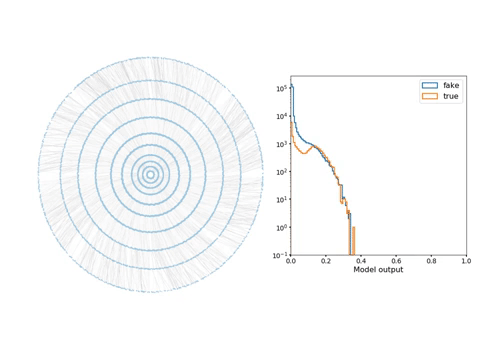HEP advanced tracking algorithms
at the exascale (Project Exa.TrkX)
about
Reconstructing the trajectories of thousands of charged particles from a collision event as they fly through a HEP detector
is a combinatorially hard pattern recognition problem. Exa.TrkX, a DOE CompHEP project and a collaboration of data scientists and computational
physicists from the ATLAS, CMS, and DUNE experiments, is developing Graph Neural Network models aimed at reconstructing millions of particle trajectories per second
from Petabytes of raw data produced by the next generation of detectors at the Energy and Intensity Frontiers.
Exa.TrkX is also exploring the scaling of distributed training of GNN models on DOE pre-exascale systems and the deployment
of GNN models with microsecond latencies on FPGA-based real-time processing systems.

